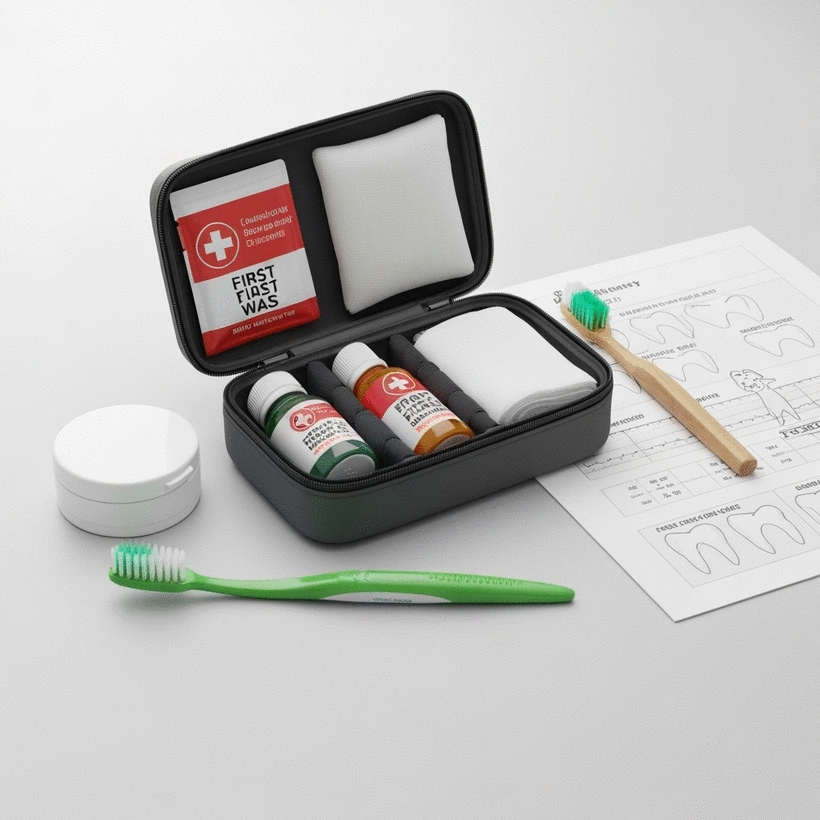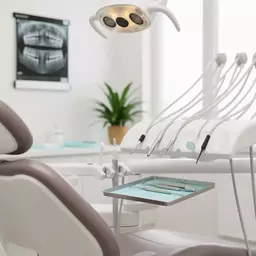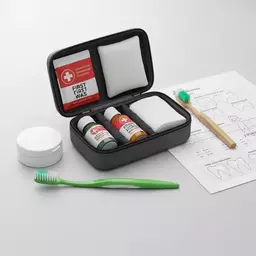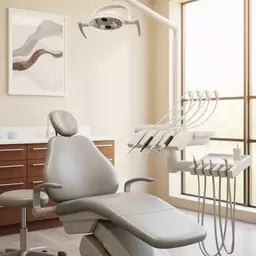Dental Emergency Preparedness Tips

Understanding dental emergencies is crucial for maintaining your oral health. Did you know that knowing how to respond can significantly decrease anxiety during these stressful moments? Here’s what you’ll learn to empower yourself in such situations!
What You Will Learn
- Identify Common Dental Emergencies: Learn about issues like toothaches, knocked-out teeth, broken crowns, and oral infections, and why they require prompt attention.
- First Aid Steps: Discover immediate actions to take in emergencies, such as how to handle a knocked-out tooth or alleviate severe pain.
- Importance of Preparedness: Understand the significance of having a dental emergency plan, including knowing dentists' contacts and symptoms that need urgent care.
- Navigating Costs and Insurance: Get insights into the typical costs associated with emergencies and how to navigate dental insurance for optimal coverage.
Emergency Dental Costs & Insurance Insights
Understanding the financial aspects of dental emergencies can alleviate stress. This visual breaks down typical costs and how insurance plays a role.
Typical Emergency Costs
Knocked-out Tooth:
$200 - $600
Severe Toothache:
$100 - $300
Broken Crown:
$500 - $3,000
Oral Infection:
$200 - $1,200
Navigating Insurance Coverage
-
✓
Review policy for specific emergency coverage.
-
✓
In-network providers reduce out-of-pocket costs.
-
✓
Check for pre-authorization requirements.
-
✓
Look for emergency clauses for extra benefits.
Uninsured? Ask about payment plans or financing options.
Understanding Dental Emergencies and Their Impact on Oral Health
Dental emergencies are more common than you might think, and understanding them can significantly impact your oral health. Emergencies can include a variety of situations, such as toothaches, knocked-out teeth, broken crowns, and oral infections. Each of these scenarios requires prompt attention to prevent further complications and ensure your well-being.
Have you ever experienced a sudden toothache that left you wondering what to do next? Knowing the types of emergencies can help you respond effectively and seek the right care quickly. Each emergency can lead to heightened anxiety, but being informed allows you to act confidently!
Defining Common Dental Emergencies
- Toothaches: Often caused by cavities, infection, or gum disease, toothaches can indicate a more serious issue.
- Knocked-out Teeth: A traumatic event can lead to losing a tooth, which needs immediate attention to increase the chances of saving it.
- Broken Crowns: If a crown gets damaged, it can expose the underlying tooth, causing pain and potential infection.
- Oral Infections: Infections in the mouth can lead to severe pain and swelling, requiring urgent care.
Understanding these common emergencies is crucial because they often signify underlying issues that could lead to further complications if not addressed swiftly. Remember, knowledge is power, especially in a stressful situation!
The Importance of Preparedness in Dental Emergencies
Being prepared for a dental emergency means you can act fast when it matters most. It’s essential to know who to contact, where to go, and what first aid steps to take. This preparation can not only save your smile but also prevent a minor issue from becoming a major health concern.
At eDentistNearMe, we emphasize the importance of having a plan in place. This means knowing the nearest emergency dental offices and even having a go-to list of symptoms that require immediate attention. Are you ready to take control of your dental health? Let’s work together to ensure you’re equipped for those unexpected moments!
Immediate First Aid Steps for Common Dental Situations
What to Do in a Dental Emergency: First Aid Protocols
When faced with a dental emergency, knowing what to do can make all the difference! Here are some immediate first aid steps you can take:
- Knocked-out Tooth: Handle the tooth by the crown, rinse it gently, and try to place it back in its socket. If that's not possible, keep it moist in milk or your saliva and seek dental help right away.
- Severe Toothache: Rinse your mouth with warm salt water and use over-the-counter pain relievers to manage pain until you can see a dentist.
- Broken Crown: If a crown breaks, try to keep the area clean and avoid chewing on that side until you can see a dentist.
Taking these steps can buy you valuable time while you prepare to seek professional help. Don’t forget, the quicker you act, the better the outcome!
Relieving Pain and Controlling Bleeding
In emergencies, managing pain and controlling bleeding is crucial. Here are some effective tips:
- Apply a cold compress: This can help reduce swelling and numb the pain.
- Use gauze for bleeding: If you’re experiencing bleeding, apply gentle pressure with a clean piece of gauze until the bleeding stops.
- Over-the-counter pain relief: Non-prescription medications can help alleviate discomfort while you wait for professional care.
Staying calm and taking action to relieve pain can significantly help you cope until you receive the care you need. Always remember, you’re not alone in this—help is just a call away!
Engage with Us!
Have you ever faced a dental emergency? We want to hear your stories! Share your experiences and insights about how you managed the situation. Your input can help others feel more prepared and less anxious when they encounter similar challenges. What was your biggest takeaway from that experience?
Understanding Costs and Insurance in Dental Emergencies
When faced with a dental emergency, understanding the financial aspects can help ease some of the stress. Many patients often wonder how insurance will cover their unexpected dental visits, especially when a toothache strikes at 2 AM! Knowing what to expect in terms of costs and coverage can empower you to make informed decisions. Let’s dive into navigating dental insurance and the typical costs associated with emergencies.
Navigating Dental Insurance for Emergencies
Dental insurance can be tricky, but I’m here to help you understand it better! Typically, most dental plans cover emergency visits, but the extent of coverage may vary. Here are some key points to consider:
- Check your policy: Always review your policy details for specific coverage on emergency visits.
- In-network vs. out-of-network: Visiting an in-network dentist can greatly reduce your out-of-pocket costs.
- Pre-authorization: Some insurers may require pre-approval for certain procedures, so it's worth checking beforehand.
- Emergency clauses: Look for any emergency clauses that might provide additional benefits for urgent care.
If you’re uninsured, don’t worry! Many dental practices, including those connected through eDentistNearMe, offer flexible payment plans or financing options. It's always a good idea to ask about these options when seeking care.
Typical Costs Associated with Dental Emergencies
Understanding the costs linked to dental emergencies can help you prepare financially. Here’s a breakdown of average expenses you might encounter:
- Knocked-out Tooth: $200 - $600 (depending on re-implantation and follow-up care)
- Severe Toothache: $100 - $300 (for diagnosis and treatment)
- Broken Crown: $500 - $3,000 (depending on the material and location)
- Oral Infection: $200 - $1,200 (including treatments and possible antibiotics)
These costs can vary based on your location and the specific dentist you visit. If you find yourself in a dental emergency, remember that your health is the priority! Seeking immediate care can often save you from higher costs later on.
FAQ: Your Questions About Dental Emergencies Answered
What are the most common dental emergencies?
Common dental emergencies include severe toothaches, knocked-out teeth, broken crowns, and oral infections. Each requires prompt attention to prevent further complications.
What should I do if a tooth is knocked out?
Handle the tooth by the crown, gently rinse it, and try to place it back into its socket. If re-implantation isn't possible, keep the tooth moist in milk or saliva and seek immediate dental help.
How can I relieve a severe toothache at home?
Rinse your mouth with warm salt water and use over-the-counter pain relievers to manage the pain until you can see a dentist. Avoid placing aspirin directly on the gum tissue as it can cause burns.
Does dental insurance cover emergency visits?
Most dental plans cover emergency visits, though the extent of coverage varies. It's advisable to review your policy details, check for in-network providers, and look for specific emergency clauses.
What is the typical cost for treating a broken crown?
The cost for treating a broken crown can range from $500 to $3,000, depending on the material used and the complexity of the repair or replacement.
Why is preparedness important for dental emergencies?
Preparedness ensures you can act quickly and effectively, knowing who to contact and what first aid steps to take. This can prevent minor issues from becoming major health concerns and save your smile.
Post-Emergency Care and Follow-Up Considerations
After visiting an emergency dentist, it’s important to know what to expect next. Follow-up care is crucial for ensuring your recovery is smooth and effective. Let’s explore what happens after you receive treatment.
What to Expect After Visiting an Emergency Dentist
Once the immediate crisis is addressed, follow-up appointments can be vital for ensuring everything heals properly. Here’s what you might expect:
- Check-up Appointment: Schedule a follow-up to monitor your recovery and check for any complications.
- Pain Management: You may be prescribed pain relief options to help with discomfort during healing.
- Dental Hygiene: You might receive specific instructions on how to care for your mouth post-treatment.
- Further Treatment: Depending on the situation, additional procedures may be necessary for complete recovery.
Staying on top of follow-up care can make a huge difference in your overall oral health and comfort!
Pain Management and Recovery Tips
Managing pain after a dental emergency is crucial for a smooth recovery. Here are some effective tips I often share with my patients:
- Over-the-counter Pain Relievers: Ibuprofen or acetaminophen can help alleviate discomfort.
- Cold Compress: Applying a cold pack to the affected area can reduce swelling and numb pain.
- Soft Foods: Stick to soft foods and avoid hot or spicy items to minimize irritation.
- Follow Care Instructions: Always adhere to the specific aftercare guidelines provided by your dentist.
By following these tips, you can help ensure a quicker recovery and get back to enjoying life pain-free!
Engaging Resources and Tools for Dental Preparedness
Being prepared for dental emergencies goes a long way in ensuring your safety and peace of mind. Let’s look at some engaging resources that can help you stay ready!
Downloadable Emergency Checklists and Guides
At eDentistNearMe, we believe in empowering you with the right knowledge. That’s why we offer downloadable checklists and guides for dental emergency preparedness. Here’s what you’ll find:
- Emergency Contacts: A list of local emergency dentists and your own dentist’s contact information.
- First Aid Steps: Clearly outlined steps for common dental emergencies.
- Important Information: Space to note any allergies or medications relevant to your dental care.
These resources can be a game-changer when you need help the most!
Interactive Multimedia for Learning First Aid Steps
Learning through visuals can enhance your understanding of how to respond in dental emergencies. For a comprehensive guide to handling medical emergencies in a dental setting, you can refer to the Dental Council of Ireland's Code of Practice regarding Medical Emergencies. Additionally, the American Dental Association offers valuable resources on medical emergencies in the dental office. For in-depth clinical insights, consider resources like the National Center for Biotechnology Information's article on Dental Emergencies. Consider utilizing:
- Videos: Step-by-step demonstrations for various emergency procedures.
- Infographics: Quick reference guides that simplify complex information.
- Webinars: Live sessions where you can ask questions and learn from dental professionals.
Taking advantage of these multimedia tools can not only prepare you but also instill confidence in managing potential dental emergencies!
Empowering Patients: Taking Control of Your Dental Health
Ultimately, being informed and prepared can significantly impact your experience during a dental emergency. As we wrap up, let’s reflect on the importance of knowledge and preparedness.
Emphasizing the Importance of Preparedness and Knowledge
Having a solid understanding of dental emergencies can make all the difference. Remember, it’s not just about knowing what to do but also having the right resources at your fingertips. Stay informed, and don't hesitate to reach out to your local emergency dentist when needed!
Encouraging Readers to Share and Engage
Your experiences matter! I invite you to share your dental emergency stories or connect with us at eDentistNearMe. Engaging with others can provide support and valuable insights for everyone navigating similar challenges. Together, we can create a community that prioritizes oral health and well-being!
Recap of Key Points
Here is a quick recap of the important points discussed in the article:
- Understand Common Emergencies: Familiarize yourself with dental emergencies like toothaches, knocked-out teeth, broken crowns, and oral infections.
- Be Prepared: Know who to contact and where to go in case of a dental emergency to act quickly and effectively.
- First Aid Steps: For a knocked-out tooth, rinse and try to reinsert it or keep it moist. For severe toothaches, rinse with warm salt water and manage pain with over-the-counter medications.
- Manage Pain and Bleeding: Use a cold compress to reduce swelling and apply gauze for bleeding until you can see a dentist.
- Understand Costs and Insurance: Review your dental insurance policy to understand coverage for emergency visits and typical costs associated with dental emergencies.
- Follow-Up Care: Schedule follow-up appointments to ensure proper healing and address any complications after an emergency visit.






